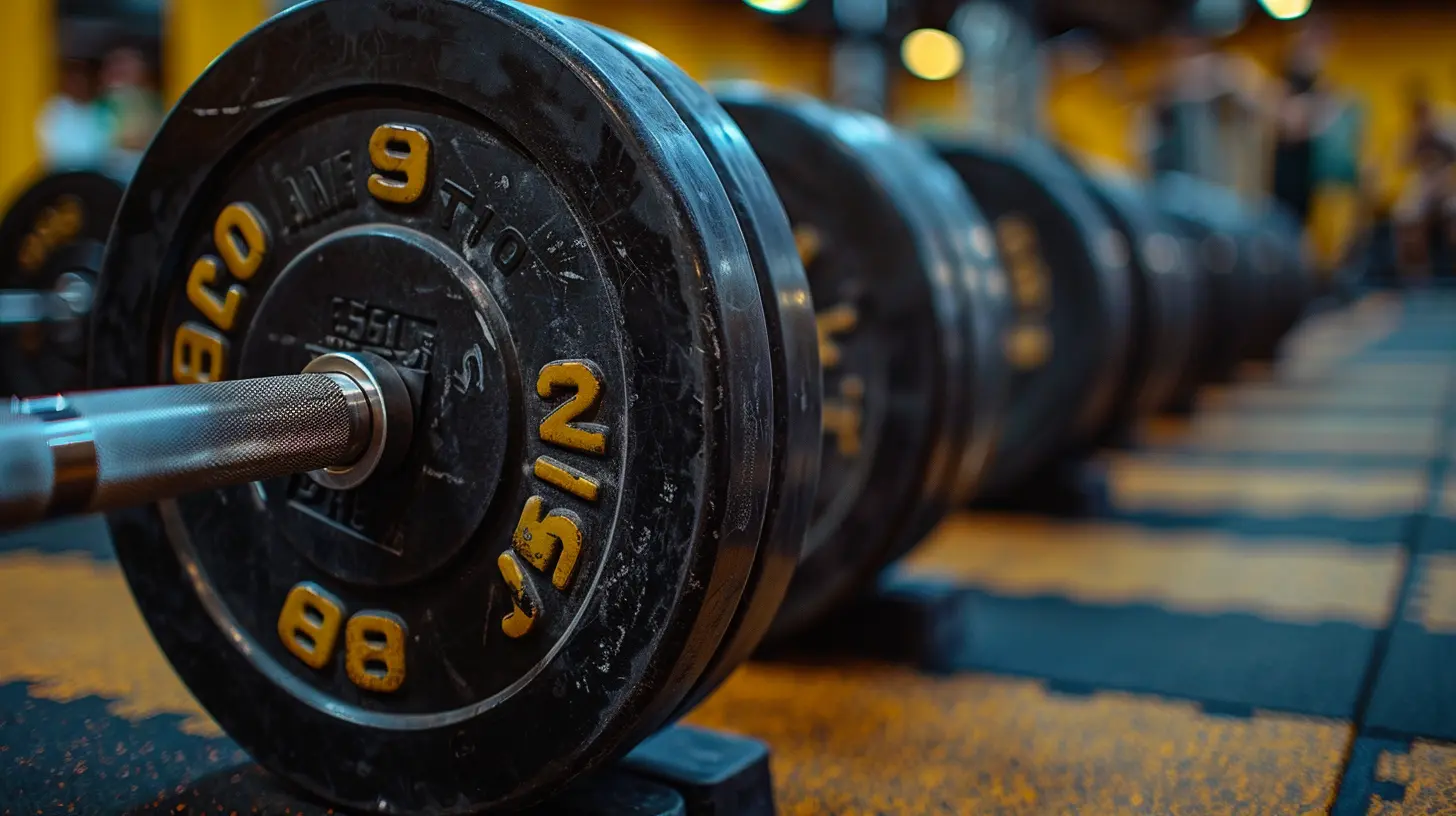How to Overcome Plateaus in Your Athletic Training
4 August 2025
Let’s be real for a second — hitting a plateau in your athletic training sucks. You've been putting in the work, grinding through reps, sweating it out day after day, and suddenly... nothing. No gains. No speed boost. No extra endurance. Just the same old results. Sound familiar?
The good news? A plateau isn't the end of the road. In fact, it’s a pretty normal part of the journey for any athlete — from weekend warriors to elite pros. So, if your progress has stalled, don't throw in the towel just yet.
In this guide, we're going to break down how to overcome plateaus in your athletic training. We'll get into the nitty-gritty, cut through the fluff, and give you real strategies that actually work.
What Exactly Is a Training Plateau?
First things first — what are we even talking about?A training plateau happens when your body adapts to your current workout routine, and as a result, your performance levels off. That means you're no longer getting stronger, faster, or fitter like you used to.
Your muscles, like any smart system, figure out what you're doing and get comfortable. Too comfortable.
Think of it like driving the same route to work every day. At first, you’re alert and learning every turn, but soon it becomes autopilot. That’s exactly what your body does when you don’t switch things up.
Signs You've Hit a Plateau
Sometimes, it's tricky to know if you're really stuck or just having a bad week. Here are a few red flags:- Progress has flatlined: Your strength, endurance, or agility hasn’t improved for several weeks.
- Motivation dips: You’re dreading workouts that used to excite you.
- Your body feels the same: No muscle growth, no fat loss.
- Training feels easy: You’re not challenging yourself anymore.
- Increased fatigue or nagging injuries: Your body's talking; are you listening?
Recognize any of those in yourself? If so, you're probably dealing with a plateau.
Why Plateaus Happen
Plateaus can happen for a bunch of reasons — and often, it's a combo of factors. Here's what could be holding you back:1. Same Old Routine
If you're doing the exact same exercises, reps, and sets every week — spoiler alert — your body will stop responding. It adapts and doesn't need to grow stronger to meet predictable demands.2. Lack of Recovery
Remember: muscles grow when you rest, not while you train. Lack of sleep, overtraining, or poor nutrition can all mess with your recovery game.3. Poor Nutrition
Fuel matters. Without the right balance of protein, carbs, fats, and hydration, your body can’t repair or perform at its best.4. Mental Burnout
Training isn't just physical — it’s mental too. Constantly pushing without enjoying the process leads to stress, which kills performance.
How to Break Through the Plateau Wall
Here’s the part you came for: the solutions. Let’s bust through that wall and reignite your progress. Ready?1. Change Up Your Workouts
The simplest and most effective fix: mix things up. Your body needs new challenges to grow. Try:- Different modalities: Switch from weightlifting to plyometrics or add HIIT if you always do steady-state cardio.
- Change rep ranges: If you always lift 3 sets of 10, try 5 sets of 5 or 4 sets of 12.
- Tempo shifts: Slow down or speed up the tempo of your reps. Controlling both the concentric and eccentric movement can work wonders.
- Try supersets or circuits: Combine exercises to increase intensity and time under tension.
Keep your muscles guessing.
2. Focus on Progressive Overload
To make gains, you’ve gotta progressively overload your muscles. That means pushing a little more each week — heavier weights, more reps, or increased intensity.Think small improvements over time. Even adding 5 pounds to your lift or an extra rep per set adds up big time.
3. Deload and Recover
Sometimes the answer isn't more — it's less.A deload week is a planned reduction in training intensity or volume. It gives your body and brain a breather. Don't worry — it doesn't mean you're slacking off. It's actually a smart way to come back stronger.
Also, prioritize sleep, hydration, foam rolling, massages, and active recovery. You can’t train like a beast if you rest like a sloth.
4. Dial In Your Nutrition
You can’t out-train a poor diet. Period.Make sure you're:
- Eating enough protein to repair and grow muscle (aim for 1g per pound of body weight)
- Carbing up for energy — especially around workouts
- Getting healthy fats for hormone support
- Drinking water like it’s your job
A nutritionist can help tailor a plan to your needs, but the basics are the basics — and they work.
5. Track Everything
Seriously, it’s hard to know what’s working if you’re not tracking it.Use an app, notebook, or spreadsheet to log:
- Your workouts (exercises, weights, reps, sets)
- Sleep hours
- Calories/macros
- Mood and energy levels
This helps spot trends and pinpoint what's causing the plateau.
6. Set New Goals
Sometimes you’re stuck because you're just… bored.If your original goal was to squat 225 and you hit it, what now?
Set a fresh goal — maybe a new PR, mastering a skill (like pull-ups or handstands), or entering a race. Having a target on the horizon sparks motivation.
7. Get a Coach or Training Partner
A coach brings a fresh perspective and helps with form, programming, and accountability. If coaching isn't in the cards, find a training buddy to push you harder than you push yourself.Let’s be honest — we'd all lift a little heavier with someone watching, right?
8. Listen to Your Body
Sometimes plateaus are a signal, not a problem. Your body might be telling you it needs a true break. Injuries, illness, and chronic fatigue are not badges of honor.Take a week off. Go hike, swim, or just chill. You won’t lose your gains — and you might return better than ever.
The Mental Game: Beat the Plateau in Your Head
Let’s not forget: training is as mental as it is physical.Plateaus can mess with your confidence and make you doubt if it’s all worth it. But don’t let frustration win. Every athlete — and we mean every athlete — faces this. What matters is how you respond.
Here’s how to stay sharp mentally:
- Celebrate small wins: Even if it’s just showing up on a tough day.
- Visualize success: Picture yourself smashing that lift or crossing that finish line.
- Practice patience: Progress isn’t linear. It’s more like a messy staircase — up, down, sideways, then up again.
- Remind yourself why you started: Tap back into your “why” to reignite the fire.
When Should You Worry?
A plateau isn’t usually something to stress over — it’s typically just part of the cycle.But if it’s been 8+ weeks of no progress despite trying these strategies, it might be time to:
- Get blood work done (hormones, iron, vitamin D levels)
- See a sports therapist or physical therapist
- Reevaluate your life stresses (work, family, sleep, etc.)
Sometimes external stress is the hidden hand holding you back.
Final Thoughts
You’re not broken. Hitting a plateau doesn't mean you're doing everything wrong — it just means your body is ready for a new challenge.Instead of seeing a plateau as a block, see it as a signpost. It’s telling you that you’ve maxed out one path, and it’s time to tweak your approach. Whether that means shaking up your routine, dialing in recovery, or setting new goals — the power’s in your hands.
So, don’t give up. Shift gears, lean in, and break through. You’ve got this.
all images in this post were generated using AI tools
Category:
AthleticsAuthor:

Onyx Frye
Discussion
rate this article
1 comments
Kestrel Ramirez
This article effectively highlights strategies to break through training plateaus, emphasizing the importance of varied workouts, proper recovery, and mental resilience. Incorporating these elements not only enhances physical performance but also fosters a growth mindset, vital for athletes aiming to achieve their full potential.
August 31, 2025 at 4:36 AM

Onyx Frye
Thank you for your insightful comment! I'm glad you found the strategies on varied workouts, recovery, and mental resilience valuable for overcoming training plateaus.


